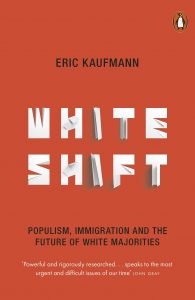 Review of Eric Kaufmann, Whiteshift: Populism, Immigration, and the Future of White Majorities (Penguin, 2018). 624 pages.
Review of Eric Kaufmann, Whiteshift: Populism, Immigration, and the Future of White Majorities (Penguin, 2018). 624 pages.
This is the second part of the review, the first having appeared in Australia’s Quadrant magazine in September 2019 on pp. 31-37.
That first part is also accessible at Quadrant Online.
Contents
| I | Introduction | VII | The Inevitability of White Disappearance |
| II | Pop Evolutionary Psychology | VIII | Naïve Treatment of Anti-white Politics |
| III | No Conflicts of Interest | IX | Cosmopolitan Elites’ Right to Rule |
| IV | Ethnic Interests Undeveloped | X | Kaufmann’s Bravery |
| V | Ethno-nationalist Intellectuals | XI | Conclusion |
| VI | The Inevitability of Replacement Migration |
I
Introduction
In Part One of this review, published in Quadrant (September 2019), I set out the thesis of Eric Kaufmann’s book, Whiteshift: Populism, Immigration, and the Future of White Majorities, and connected it to his earlier writings. In this second part I expand on some points of criticism. I noted that Whiteshift repeats the view originally expressed in Kaufmann’s 2004 book, The Rise and Fall of Anglo America (2004), that left liberal elites should allow conservative whites to express their identity. In Whiteshift he adds that if whites wish, they should be allowed to huddle together as their societies inexorably become majority non-white and panmix into hybrid populations. “Unmixed whites may persist in rural backwaters, Eastern Europe and a few tight-knit diasporas”.1 Kaufmann thinks that cosmopolitan values such as non-discriminatory immigration and rule by post-ethnic liberal elites are non-negotiable. But the chains of political correctness should be loosened a bit, at least while white conservatives have the numbers and resources to fight back. Otherwise they could become restless and disrupt the transition to a borderless hybridised global society.
His message to fellow cosmopolitans is, if you want to avoid future Trumps and Brexits, then take your boot off the neck of white ethnics while they have some kick left in them. But the pressure should only be released symbolically. Whites should on no account be permitted to erect pro-white or pro-Christian immigration policies. Let them preserve some dignity but under no circumstances allow them to remain white.

Prof. Eric Kaufmann
In Part One I also discussed some major implications of Kaufmann’s analysis. The first is his assessment that white ethnics were subordinated by left liberal elites decades ago, a thesis documented in The Rise and Fall of Anglo America. Whites’ marginalisation within the establishment allowed their opponents to dismantle pro-white restrictions in the 1960s and 1970s in the U.S., Canada and Australasia. Kaufmann’s description of white majorities as “dominant ethnicities” just means they are in the majority, not that they are dominant.
The second implication is that whites still have the possibility to resist their demographic submergence. Why else seek to placate white rebelliousness? As Kaufmann stated in an interview about Whiteshift, the reason progressives should not push against white identity is that doing so only produces more white identity, and this translates into greater support for nationalist populism, such as Trump’s election victory.2
Before proceeding to critical remarks, I should reiterate praise for an analysis that goes far beyond most academic studies of the national question formulated in Australia. In the first part I showed how Kaufmann and the London school of ethnic studies to which he belongs are too sophisticated to commit some fallacies that are commonly made in Australia.
One fallacy equates citizenry and nation. Kaufmann knows that the state is not the nation, that possessing legal proof of citizenship does not imply national identity or belonging. This is the lesson of a well known 1978 paper by American political scientist Walker Connor.3 As Australian commentator Peter Coleman remarked: “Australian nationality had ‘come of age’ in the late 19th century, well before it was recognised in law and long before the Great War. It had its laws and traditions, its folk heroes and songs, its Lawsons and Melbas. It created the Commonwealth of Australia.”4 That is a fact unknown to much of Australia’s political class, that the legalities and pomp of federation were created by the nation to serve its interests. Government-provided citizenship papers and a grab-bag of universal creedal values can create only a shallow attachment compared to the historic nation’s crimson thread of kinship.5
A second and far more common fallacy avoided by Kaufmann is the sociological conceit that humans have transcended their evolutionary past, that human societies, unlike those of all other species, are the products exclusively of culture and economics, with only peripheral input from biology. He tempers the view of humans as calm rational actors able to switch identities to maximise individual utility. Kaufmann is well aware of the human capacity to engage in orgies of violence and self-sacrifice.6 He draws on evolutionary psychology to explain other aspects of ethnic behaviour. That his efforts in that direction are incomplete should not distract from the specialness of this scholar.

Prof. Walker Connor
A third point deserving praise is that Whiteshift shows how nation-enhancing policies can spring from unbiased scholarship even when unleavened by patriotic motives. Progressive leftists who pose as the inheritors of Enlightenment values should be embarrassed that their partisan racial policies are challenged by a true cosmopolitan such as Kaufmann. His approach overlaps the liberal nationalism of Sir Henry Parkes which was influenced by John Stuart Mill’s philosophy of responsible government, especially his caution against run-away diversity.7 Mill anticipated the sociological finding that ethno-religious diversity tends to dissolve social cohesion. Without ever lauding Anglo Saxons or swearing allegiance to any nation, Mill advocated giving people the right to live among and be governed by their own people.
Mill’s contemporary, James Bryce, also contributed to liberal nationalism. Bryce (1838-1922) was a prominent British jurist, Liberal politician, historian and constitutional theorist. He pointed out that representative democracy relied upon the “self-conscious” identity of electors acting as “a collective and unified sovereign” that know themselves to be supreme over the state. Bryce distinguished between the sovereign people and the state. He emphasised that citizens’ collective identity was critical to their democratic dominance over the state. This overlaps Mill’s conception of the right of national association and self-government. Bryce added to this right an interest in collective identity as a bulwark of democracy. He also argued that descent from Germanic peoples made Britain, the U.S.A. and Germany natural friends bound by shared ideals which he termed “Teutonic freedom”. He was a radical liberal for his day who established the National Liberal Club in 1882 and opposed Britain’s use of concentration camps during the Boer War. Bryce was also a leading critic of German mistreatment of Belgians and Turkish atrocities against Armenians and Assyrians during the First World War.
Bryce differed from Mill in his ethnic identitarianism. In his three-volume book The American Commonwealth, published in 1888, Bryce portrayed the United States as a distinctly Anglo-Saxon creation, an identity he linked to democratic institutions. He saw the English parliament as “the historical successor of the Folk Moot of our Teutonic forefathers”.8 Bryce’s analysis implies the need for a robust identity, one able to motivate collective action in defence of liberty. His argument might explain why, before the 1960s, democracy in Western societies was associated with ethnic and national core identities. Bryce combined liberal values with explicit Anglo-Saxon identity and sympathy for other people’s aspirations for independence.

Dr. Peter Coleman
These national components of liberalism were forgotten in the cultural revolution of the 1960s and 1970s. In the post-WWII decades liberal theorists dispensed with the accumulated wisdom about ethnicity and asserted that national solidarity could be gained by issuing the legalistic credential of citizenship. Even ostensibly conservative governments such as Australia’s Liberal-National coalition have relied on the formalities of citizenship to engender social cohesion. This fallacious approach has become a mainstay of multicultural theory, probably because it helps justify indiscriminate largescale immigration.
Classical liberalism, free of the intellectual corruption of the universities and mainstream media, might have curbed the anti-white authoritarian elements of multiculturalism. Prudent liberal governance alone, not motivated at all by ethnocentrism, would have kept immigration policy responsive to popular sentiment, and thus limited ethno-religious diversity. Most importantly, true liberal policies would have helped preserve the majority’s continued involvement by seeking the public’s permission before altering national identity. As the country’s most important stakeholders, perhaps the majority’s participation would have ensured the operation of democracy’s self-correcting mechanism and kept political leaders in touch with the majority’s interests. And if Australia’s leaders had been advised by unbiased, open-minded analysts or just bureaucrats with independent common sense, we would have the same levels of Islamic terror and Sudanese lawlessness as does Hungary, Poland and Japan.
Though Kaufmann is no identitarian, in his own way he adopts some of the cosmopolitan, universalist components of Mill and Bryce. Now some critical remarks.
II
Pop Evolutionary Psychology
Kaufmann’s attempt to connect genetic fitness to policy choices is amateurish. He dips into evolutionary psychology now and then, for example to report twin studies indicating that political orientation has a large genetic component. It is a pity he did not use more of that discipline.
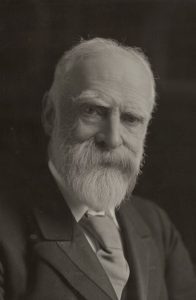
1st Viscount James Bryce
Kaufmann does acknowledge that favouring those who share our genes paid off in the evolutionary past, but contends that in mass societies it pays off, presumably in fitness terms, to “transcend narrow tribalism”.9 A typical scenario, he states, was when a society was conquered and its members confronted with difficult choices: “Those who repressed their tribalism to adapt to these larger units may have been able to pass their genes on more effectively.”10 This scenario lacks theoretical grounding. Instead of citing authorities on the subject he relies on a non-specialist, the social psychologist Jonathan Haidt. When discussing evolution he relies on Richard Dawkins, a populariser who throughout his career misrepresented and politicised the evolutionary analysis of ethnicity.11 Ignored is William D. Hamilton, a founder of sociobiology who also developed a theory of ethnic solidarity in the 1960s and 1970s.12 Hamilton’s theory of inclusive fitness is a mainstream evolutionary approach to understanding altruism among kin. Since ethnic groups show substantial kinship between members, their growth and decline affect members’ fitness. Kaufmann’s genetic argument would have been more convincing if he had compared the aggregate kinship of families and ethnic groups.13 That would have helped him ask a better question. Would conquered individuals pass on more of their gene variants by forsaking their children or their fellow ethnics or striking a balance between the two strategies? Answering that question requires consideration of the number of copies of gene variants carried by families and ethnic groups. Kaufmann also needed to consider the genetic difference between conqueror and conquered. Accepting incorporation of one’s family or tribe into another would have less fitness cost if the conqueror were closely related because a similar gene pool carries many copies of the conquered people’s genes. The same goes for accepting immigration.
Kaufmann’s weakness in evolutionary theory leads him to advocate grossly maladaptive policies, ones that do not preserve group reproductive interests. He does not take seriously the issue of genetic fitness, the ultimate criterion of adaptiveness. Cultural fitness is reduced to retaining a few myths and reminders of Christianity. Kaufmann’s model conservative is someone complacent about the fate of his ethnic kin so long as some cultural markers are passed on.
III
No Conflicts of Interest
Kaufmann’s poor evolutionary psychology allows him to avoid the tough political and ethical issues that arise when interests collide. He maintains that compromises are possible without describing the various interests of ethnic groups and cosmopolitans. His call for tolerance of white identity is compatible with evolutionary principles. But it is absurd to pretend that ethnic group fitness is unaffected by receiving replacement-level immigration. To acknowledge that mass immigration can be an existential threat necessities discussion of the large store of genetic kinship found within ethnic groups.
The reality is that racial diversification of white societies harms their group fitness because it encourages intra-societal conflict and reduces the relative size of their gene pools. In avoiding that loss it can be necessary to cause others to lose out. Win-win outcomes are not always available. Kaufmann expects common descent to continue its path of diminishing importance. National cohesion, he suggests, will be based on cultural more than racial similarity. True? Let us examine his argument.
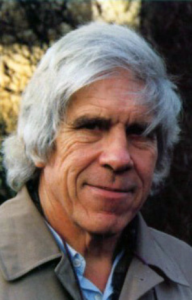
Dr. William Hamilton
Early in his book Kaufmann defines ethnicity. An ethnic group consists of individuals who believe they descend from the same ancestors, “and differentiate themselves from others through one or more cultural markers: language, racial appearance or religion.” Thus he appears to include racial ethnic markers as cultural, a fundamental error. But a few pages further on he states: “Physical differences likewise erode only over generations, through intermarriage”,14 which implies that racial differences are genetic. To resolve the conflict Kaufmann states: “Cultural tradition, not genes, tells us which markers matter and which don’t.” That is true to a degree. As Kaufmann says, the prominence of different markers can be raised or lowered culturally.
On the other hand, racial recognition is universal to the species, slow to change and in some respects hard wired. At the start of social interactions, liberals begin thinking about racial markers in the same instinctive manner as do conservatives. The difference comes a split second later when ideology and self-censorship kick in.15 The limited capacity of culture to erase ethnic preferences is evident in the United States, where white liberals often behave like conservatives by choosing white neighbourhoods and schools for their children, regardless of their voting habits or responses to opinion surveys. White progressives cling together in shrinking white suburbs in similar manner to Trump voters in fly-over country. America is still racially segregated due to spontaneous preferences.16
Brazil is another example of the persistence of racial categories. This is the type of mixed society Kaufmann sees as the West’s future by 2100. Brazil is often held up as a model of racial integration. There has been substantial hybridisation but light skinned people typically live apart as do the various self-regarding ethnicities. Racial inequality is extreme. African-Brazilians are underrepresented in the professions and in the middle class. Ethnic self-sorting is governed by a “hyperconsciousness of race” wrapped in a public ideology that vehemently denies the relevance of race. The wealthiest populations – white Christians, Japanese and Jews – are substantially unmixed and have segregated themselves. National cohesion is weak.17
It is difficult to accept the divided, conflict-prone societies of the United States and Brazil as ideals deserving to be emulated.
IV
Ethnic interests undeveloped
Also notable is Kaufmann’s undeveloped the concept of ethnic interests. He does not go much further than a head count. A basic ethnic interest is the welfare and status of fellow ethnics, the driving motive of the civil rights movement in the United States. Another is simply feeling at home among a particular people, usually one’s own. Rod Liddle, associate editor of The Spectator, expresses this candidly when he explains why he dislikes London. The dislike is mainly about Londoners’ arrogance, to which he adds: “Sometimes, in various parts of London, I feel a foreigner myself.” Though born in London he feels most at home where his relatives live, in the Northeast of England.18

Prof. Jonathan David Haidt
A fundamental ethnic interest is control of a territory with which a people identifies. Perhaps the most intractable conflicts are between ethnic groups that lay claim to the same homeland, such as in Palestine. Another ethnic interest is inter-generational ties and traditions, including religion, and their reproduction down the generations. Describing these interests would have reinforced Kaufmann’s assertion that civic nationalism is a weak tie compared to ethno-nationalism.
Someone who is familiar with the sociobiological analysis of ethnicity should have been alert to research into ethnic interests. Kaufmann discusses Pierre van den Berghe’s theory of ethnic nepotism, which is a fine start. Richard Dawkins, who he references more than van den Berghe, is not a serious researcher of ethnicity or race. Unreferenced altogether are biosocial scientists such as Irenaeus Eibl-Eibesfeldt, Robin Fox, William Hamilton, Henry Harpending, Doug Jones, Richard Lynn, Kevin MacDonald, Philippe Rushton, Tatu Vanhanen, Michael Woodley of Menie, and more. Kaufmann should be informing his readers that ethnic groups are reproductive interests for their members because they are pools of genetic kinship analogous to families. That makes ethnic stratification doubly upsetting and radicalising because it signals that some kin groups have higher status than others.
Due to patchy use of evolutionary psychology, Whiteshift downplays race as an ethnic marker. That was settled decades ago, for example by van den Berghe’s analysis of ethnic identity and J. P. Rushton’s analysis of the sub-conscious attraction of similarity. In both these theories racial markers are recognised along with cultural and linguistic ones.
Despite agreeing that racial characteristics are genetically inherited, Kaufmann denies that white identity has a genetic component.19 He writes: “Whites are not primarily attached to those of their race because they are genetically closer to these people: there are no discrete biological races so our tribal impulses have no obvious boundaries.”

Prof. Pierre van den Berghe
This reflects Dawkins. It is muddled in three ways. First, it dodges the question whether there is a genetic component by diverting to whether it is “primary” and clearly demarcated. But ethnic attachment need not be primary in any way to be significant. Ethnic attachment is usually a weak social force compared to family bonds, but influential when multiplied across populations. Kaufmann’s statement is incomplete concerning boundaries. Yes, racial boundaries are often blurred but they are frequently razor sharp. When closely related peoples mingle it can be difficult to tell them apart. But when races and cultures meet that have been separated for many thousands of years and form geographical races, the contrast is usually apparent to all. And recall that race is but one ethnic marker. Cultural boundaries are usually more disjunctive.
The concept of genetic relatedness also needs clarification. Ethnicities are descent groups whose members therefore have some degree of genetic similarity. That fact should be explored, not obscured.
V
Ethno-nationalist Intellectuals
Kaufmann’s scholarship is also deficient regarding ethnic nationalism, perhaps explaining his dismissal of related policies. His coverage of conservative thinkers is extensive, but not of ethno-nationalists. For example, he mentions white advocate Jared Taylor, a leader of the ethno-nationalist movement in the U.S., but fails to examine any of his ideas. He does not mention Kevin MacDonald, an evolutionary psychologist and a leading theoretician of white ethnic nationalism. These two intellectuals’ ideas correspond to two gaps in Kaufmann’s analysis.
The main thread in Jared Taylor’s world view is “race realism”, acceptance of scientific findings on population differences. Related disciplines include physical and evolutionary anthropology, psychometrics, and behavioural endocrinology. No subject has been subjected to more intense cultural warfare or stronger taboos than race differences The Marxist left insists on universal equality and elements of the right insist on difference. An associated debate concerns the heritability of IQ differences. Again, the left denies robust heritability and the right accepts the results of mainstream psychometrics on the subject. Taylor argues that racial differences make some populations incompatible, for example due to differences in intelligence and crime.

Prof. James Watson
Kaufmann does not discuss any of Taylor’s ideas, despite stating that group differences are important for assessing immigrants. Kaufmann declares about the migrants who entered Europe in 2015: “I am sure they are disproportionately endowed with entrepreneurship, intelligence and grit.”20 IQ is indeed a strong predictor of educational outcomes. But if intelligence is relevant, as well as salient in ethno-nationalist ideology, how could a book such as Whiteshift exclude systematic treatment of it? Psychometrics lies outside Kaufmann’s expertise, so he could have relied on the mainstream consensus. A 2016 survey of intelligence research experts found that 90 percent believed that genes cause some of the differences between national cognitive abilities. Some of those differences are large. Seventeen percent believed that genes were the most important cause.21
Retired psychology professor Kevin MacDonald is not mentioned by Kaufmann, despite being in the intellectual vanguard of white ethno-nationalism in the United States. In The Culture of Critique, a peer reviewed monograph published in 1998, MacDonald argued that a number of Jewish intellectual movements led the assault on white identity in the twentieth century.22 In Whiteshift Kaufmann denies seeing any systematic evidence of Jewish influence on liberal immigration, a subject MacDonald has extensively researched.23 Kaufmann is aware of this because he publicly debated MacDonald on the subject in 2009.24
Consistent with Kaufmann’s finding of white subordination, it is safe to disagree with rightist positions but often fatal to one’s career to contradict left positions. An example is Nobel Prize-winning geneticist James Watson, at the time perhaps the most prestigious scientist in the world for his co-discovery of the double helical molecular structure of DNA. In 2007 Watson lost his research position for asserting that Black Africans have lower average IQ then Europeans. There are no reports of those who disagreed with Watson being penalised for their opinions. Similarly Taylor and MacDonald have been censored by various social media companies, including by Amazon.

Steven Miller, Advisor to US President Donald Trump
Further evidence of Kaufmann’s superficial examination of the subject is his mischaracterisation of Stephen Miller, a speech writer for Donald Trump, as an ethno-nationalist.25 Miller is an economic nationalist who appears not to have published analyses of ethnic nationalism or identitarian ideas.
A serious review of ethno-nationalism would have included a broad spectrum of contributions, some inadvertent, to the empirical, theoretical and ethical analysis of the phenomenon. Contributors have included political scientist Jerry Z. Muller (The Enduring Power of Ethnic Nationalism), sociologist Ricardo Duchesne (The Uniqueness of Western Civilization), Jared Taylor, the popular vDare.com website and a number of alt-right intellectuals. And that’s only in the U.S. Many more could be chosen from Europe, such as three recently deceased scholars: Guillaume Faye26 in France, Tatu Vanhanen27 in Finland, and Irenaeus Eibl-Eibesfeldt in Germany. This would inevitably have raised issues not adequately discussed in Whiteshift, such as the sociobiology of ethnic solidarity. It is disappointing that Kaufmann draws disproportionately on authors who are within the cosmopolitan tent such as Dawkins and ignores better informed conservative analysts.
Weakness of theory might have caused Kaufmann to write-off white nation states. An example is his prognosis, discussed in Part One of this review, that white ethnic states are impossible because the worldwide white population will decline to become a “speck” by the end of the century. This overlooks a point that any of the aforenamed intellectuals could have provided, that borders can perpetuate national identity.
VI
The Inevitability of Replacement Migration
Kaufmann portrays immigration as unstoppable, except where it has been stopped. He explains why he limits his analysis to Western Europe and the Anglosphere. “[I]mmigration is less important outside the West because migrants tend to avoid or pass through Eastern European states.” (Chapter 1) This omits to describe Hungary’s and Poland’s tough border protection policies. It seems that majority white society is doomed only in those societies that fail to control immigration. This blind spot in Kaufmann’s analysis occurs despite his zeroing in on immigration as the central cause of rising white populism.

Samuel Gompers
A cause of white populism, Kaufmann argues, is that for decades the major parties have refused to offer the public the choice of slowing non-white immigration. This has led to rapid ethnic change and created an opening for populist politicians, such as Trump and Nigel Farage. Kaufmann’s suggestion that pro-white politics is limited to populism is condescending. In the past it was normal for white people, like people around the world, to support restricting immigration. In Western democracies that involved voting for centrist politicians. Less than a century ago in Australia and the United States large numbers voted for labour parties that defended the white working class against low-wage non-white immigrants. The immigration issue was central to the early Labor Party in Australia, where the White Australia Policy remained in the Party platform until the 1960s. In the U.S. the great union leader Samuel Gompers was steadfastly restrictionist regarding non-white immigration. From the beginning of the Republic immigrant was limited to free white persons. From the late nineteenth century Asiatic immigration was restricted, and from 1924 to 1965 a quota system was enacted to restrict immigration to traditional European source countries. Expulsion also occurred. In the early 1950s large numbers of illegal Mexican immigrants to the U.S. were repatriated, culminating in over a million deportations under Operation Wetback in 1954. That was during the presidency of Dwight Eisenhower, an establishment conservative.
In English speaking countries immigration restriction was not “populist” if that is taken to mean reckless, authoritarian or ill-informed. In Australia, the United States and Canada liberal traditions were never in doubt, including rule of law, parliamentary government, an expanding franchise, and individual civil liberties. The parties supporting these policies were spread across the centre of the political spectrum. Kaufmann’s characterisation of white political defence also ignores tactics other than voting, such as lobbying politicians and entering into public debate.
Kaufmann is open to mainstream parties using immigration policies to court white conservative votes. However, he does not countenance them stopping immigration. The legitimate choice, he thinks, is between moderate and high intakes. Repatriation is out of the question partly because this would involve “hunting down those of mixed-race background”.28 This leads Kaufmann to envisage the large scale hybridisation he calls whiteshift.
VII
The Inevitability of White Disappearance
Kaufmann argues that thorough racial mixing is inevitable sooner or later. This is a big theme in Whiteshift, inspiring the book’s title. He asks whether white societies will be able to retain their cohesion and escape civil war even as they become highly diverse and then thoroughly hybridised. He thinks they can.
Hybridity is essential to Kaufmann’s argument. It helps bridge the gap between relatively homogeneous white societies and their mixed race futures. He proposes that, during the (present) first phase, whites should be able to vent their identity anxieties in harmless ways. In the end-phase, when non-whites are in the majority, the dynamics of hybridity will take over. Kaufmann argues that Western countries’ mixed race populations will identify as white when they become majorities, which he expects to happen by the end of the present century. White ancestry will occupy the foreground of mixed-race identities. When it does, Kaufmann thinks this will allow ethno-traditionalists, conservatives who do not care about race or culture beyond core myths, to feel secure. To them the transformation in genes and culture will not appear threatening.

Samuel Huntington
This hybridity argument is logical to a point. Naturally some mixing is occurring and will continue. Kaufmann’s ideas about how hybridity will be received are interesting. But he is not convincing when discussing the reaction of ethnic nepotists, individuals who cannot be placated by vestiges of race and culture. He writes them off. For them Kaufmann’s vision is doubly unattractive because he offers no principled way for whites to limit the impact of immigration. He objects to ethnically-based immigration restriction, the only tried and tested method by which national identity can be preserved. Nor does Whiteshift foresee or urge limits to hybridisation. He insists that resistance is hopeless, declaring that white majorities will become mixed race with or without immigration. But he then adds that, of course, the degree of admixture will be sensitive to the scale of immigration.
This raises interesting questions not adequately treated in Whiteshift. Shall whiteness remain the foreground identity for individuals who are at least, say, half or three quarters white? Or shall ethno-traditionalists be so flexible that they will feel white no matter how marginal their European ancestry and appearance? Kaufmann is unclear. For him there is no line in the sand, no limit to the Third World swamping of white countries, as long as the process is peaceful. In effect he is smoothing the pillow of a dying people. He cannot imagine an ethical way for white nations (and only white nations) to continue.
In Australia the hybridity issue has mainly concerned indigenous identity. Is it legitimate for someone who looks white and bears little or no Aboriginal culture to claim the affirmative benefits of being indigenous? For saying “no” commentator Andrew Bolt was found guilty under section 18C of the Racial Discrimination Act (Cth) 1975. Will future commentators be punished or praised for mocking individuals with one eighth white heritage who claim to be white?
These considerations help us judge Kaufmann’s equanimity in predicting a mixed-race West in one or two centuries. His is a simple extrapolation of population trends over recent decades, a period when cosmopolitan and corporate globalism were triumphant, when European nations were shedding sovereignty to join the European Union super state, when the media’s and universities’ top-down cultural revolutions had taken over the establishment.

Rod Liddle
The same type of linear extrapolation was applied to food production in the 1950s and 1960s. This led the Club of Rome thinktank to predict food shortages by the end of the century. These eminent academics did not foresee the new breeds of grains that were about to power the green revolution and the present situation where obesity has overtaken malnutrition as a global health issue.29
So we should beware predictions made by a cosmopolitan at the height of cosmopolitan power. Kaufmann admits that linear extrapolations are fallible. Perhaps mass diverse migration will peak and even reverse. We should consider other possibilities. Firstly, there are economic reasons to retain national identity. Domestic peace, social trust, low levels of corruption, and (perhaps) the division of church and state are all economic advantages. These are all characteristics of majority white societies and others such as Japan and South Korea. Other cultures show the same characteristics. Relatively homogeneous societies are better able to develop public goods and keep inequality within bounds. Also, cross-cultural research indicates that higher IQ nations have an advantage in developing a strong middle class, an industrial or post-industrial economy and democratic institutions.30 Because ethno-cultural homogeneity offers long term socio-economic benefits, it is rational to limit diversity by limiting immigration.
Another possible future global system might arise from the attractions of social cohesion and belonging. “Normative endogamy” – the expectation of marrying within the group – is universally associated with ethnic identity, though the degree of endogamy varies from culture to culture. Perhaps the mixing of populations will follow the same pattern as that shown within the United States, where ethnic assimilation has occurred much faster within the major races than between them. American sociologist Richard Alba was among the first to notice that white ethnic groups marry each other, as do Blacks, faster than they marry outside their race.31 If those spontaneous individual choices began to influence states’ immigration policies, then civilisations could remain ethnically distinct. In his famous book, The Clash of Civilizations, Samuel Huntington noted that ethnic identity plays an important (though not exclusive) role in defining civilisations. In the long term the world’s cultural and racial diversity might coalesce into a number of civilizational entities. The future is open. Whiteshift provides no reason to cease striving to create relatively homogeneous nation states, the societies best able to maintain the peace, ward off corporate imperialism, provide positive identities for their people, and preserve the richness of global human biodiversity.
VIII
Naïve Treatment of Anti-white Politics
Kaufmann does not much explore anti-white politics. He attributes the taboo on white identity to left liberal and corporate ideology. There are surely other motives as well. One is religious or racial xenophobia fed by historical grudges, for example due to colonialism in earlier centuries. Another is perception of group competition. Globalist ideologies often portray white nations as obstacles. The United Nations has a long-standing anti-Western bias. Another anti-white motive is feuding among white ethnic groups and nations. The centuries-long conflict between the Irish and the English is an example. These motives were never grounded in reason alone, but in defence of identity, status and homeland. To this should be added the secular-religious fervour Kaufmann believes has pushed left anti-white sentiment to authoritarian extremes.32 Commenting on the firing of the young British sociologist Noah Carl from St Edmund’s College, Cambridge, for his philosophical discussion of race, Kaufmann wrote: “The aim of radicals is to preserve universities as safe spaces from dissenting (ie non-radical) ideas around the holy trinity of race, sexuality and gender.”33 Defending whites on the basis of fairness or the common good will not always overcome such intense motivations.

Dr. Noah Carl
Kaufmann is aware of the powerful background forces that influence ethnic politics, including cultural elites and political leadership. But he does not apply these insights uniformly. For example, in discussing Pat Buchanan’s failed 2000 presidential campaign where he won only 0.4 percent of the vote, Kaufmann accepts the candidate’s own superficial assessment: “At the mass level, Buchanan’s run showed that immigration was not yet an issue that could mobilize the Republican membership”.34 This treats left liberal influlence – in elite culture, the media and school curricula – as outside the political process when in reality those influences are part and parcel of it. Kaufmann’s conclusion implies that the 2000 presidential election was fought on a level playing field. He does admit that the Republican Party establishment was pro-immigration but offers little explanation. Immigration might have become a live issue if it were being flagged as urgent in daily news broadcasts, TV documentaries, newspaper editorials, and university lectures.
The same political naivety is evident when Kaufmann tries to answer the excellent question of why white resistance to hostile state elites has been a long time coming, especially in the U.S. He thinks it is due to spontaneous identity processes and the dispersal of immigrants in the U.S., which have not challenged white identity as acutely as in Europe. Nowhere does he connect the delay to hegemonic anti-white cultural elites.
Elsewhere Kaufmann describes how cosmopolitan elites manipulated public opinion. In The Rise and Fall of Anglo America Kaufmann documents the radical takeover of the university system by the 1960s, an event with profound implications for Australia and the West in general. Universities have become startup factories for utopian socialist ideologies little restrained by facts about human nature. The politicisation of universities has hurt creative scholarship in swathes of disciplines. Difficult to explore a subject while simultaneously suppressing natural inquiry into it.
Kaufmann explains that early in the twentieth century, the anti-WASP counter-culture consisted of a few powerless intellectuals. By the end of the century that culture “operates on a much larger scale, permeates major institutions”. He adds that George Orwell observed that by 1930 almost all English intellectuals were on the left and noted that “in left-wing circles it is always felt that there is something slightly disgraceful in being an Englishman”.35
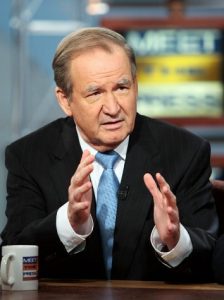
Patrick J. Buchanan
The political naivety of Whiteshift is also evident in its weak comparison of policies across states. Kaufmann’s horror repatriation scenario of “hunting down” non-whites does not apply to successful ethnic nations. How do Japan and Israel cope? They are not afflicted by police brutality or mass door-to-door sweeps. They seem untroubled by moral panics, despite the usual dramaturgy from radical left commentators. Neither are they authoritarian states. Their overseas diasporas, free of any coercion, do not condemn their homelands’ immigration policies. It seems that liberalism and ethnic nationalism are not as incompatible as Kaufmann thinks. It is not uncommon for immigrant communities to promote left liberal policies in their adopted societies while simultaneously barracking for ethno-nationalist policies in their home countries. Kaufmann does not discuss the lessons this could teach white majorities.
Kaufmann contemplates a centuries-long assimilation process without discussing all the risks attending balkanisation. He properly notes some negative effects of ethno-religious diversity, but leaves some big ones unmentioned. Race differences is one omission, as discussed. Neither does he discuss the loyalty of immigrant communities. This is especially relevant to Australia, whose neighbours have much larger populations. Should Australian governments continue building up the Chinese and Indian immigrant communities while China and India become powerful regional military actors? Fifth columns and agents of influence have caused serious problems for democracies in living memory. Already China has been criticised for manipulating its diasporas around the world to advance its goals. The same is true of Turkey and its diaspora in Europe. Both attempt to mobilise their diasporas to bring Western countries to heel. So the loyalty of those diasporas is a legitimate issue of investigation. Yet Kaufmann does not discuss the subject. He does not advise white majorities how to protect themselves. He even disapproves of pro-majority immigration, the default policy for the rest of the world. How can white majorities have a future if non-discriminatory immigration leads to their nations losing independence? Whiteshift’s omission of the links between immigration-induced diversity, foreign policy, and national security is a large hole in its analysis.
IX
Cosmopolitan Elites’ Right to Rule
It is also naïve to assume that cosmopolitans should rule. In Part One I noted that Kaufmann treats left liberal elites as uniformly motivated by cosmopolitan values. Uniformity is a quality he does not attribute to white conservatives, among whom he discerns psychological and ideological differences. He makes further questionable assumptions around this subject.

Prof. Jerry Z. Muller
Kaufmann is aware of van den Berghe’s theory of ethnic nepotism but thinks that only conservatives, not liberals, generalise their intimate nepotistic ties to the national level. “While white conservatives scale up their ethnic attachments from the intimate community to the national ‘imagined community’, liberals’ sense of ethnic primordialism extends no further than their intimate network.”36 But even those predisposed to scale up nepotistic attachments can be prevented from doing so when alienated elites manipulate public culture. “Our attitudes to bigger political questions are influenced more by the national media, politicians, cultural traditions and institutions. The institutional power of liberal ideas in countries such as Sweden or Canada accounts for the powerful disjuncture between whites’ relatively tribal local behaviour and their more cosmopolitan orientation towards immigration and national identity.” This analysis is incomplete because it does not consider societies, present or historical, in which institutional power facilitated, instead of dampened, majority ethnic nepotism. It assumes that cosmopolitan control of public culture is somehow natural and inevitable, instead of being artificial and historically aberrant. If conservative elites were back in charge of the culture, Kaufmann’s own analysis would predict them expressing their ethnic attachments in public policy like the rest of the world. They would not need to win all policy debates to make majority identity much safer.
Kaufmann’s cosmopolitan bias is to present anti-white elites as immovable givens that must be accommodated. At no point does he signpost the alternate pathway of white rebellion and liberation. For him populist nationalism really is deplorable.

Prof. Ricardo Duchesne
Whiteshift would have been improved if it had broadened its audience to include white majorities, not just left liberals. White ethnics need advice on how to handle their left liberal persecutors. From their perspective the question is how to deal with intolerant and powerful opponents, how to placate them when necessary and how to dissuade them from their ambition to have whites disappear. Whites need strategic advice. For example, if they defeat their leftist and minority antagonists, which settlement would be most advantageous and durable? Could they emulate the left by shaping education, media and immigration policy to make their victory permanent? Kaufmann does not offer this advice because he sees white ethnic survival as entailing the overthrow of his cosmopolitan values.
Kaufmann has for many years evinced belief in the inevitability and goodness of cosmopolitanism. In his 2004 book, The Rise and Fall of Anglo America, he declared that white Americans can only protect their racial identity and numbers via “an intellectual crisis in which the cosmopolitan paradigm is jettisoned.”37 But he believes that would be a “civilizational cataclysm” because it would shatter the modernist progressive narrative by compromising the Enlightenment values of freedom and equality. He misplaces the value of freedom and equality. As British philosopher Quentin Skinner shows, in times of war the public are willing to suspend individual freedom and equality. This makes sense because individual freedom and equality mean little if they are delimited by the enslavement of one’s family or nation. British civil rights are the product of a free nation.38 It seems that Kaufmann still believes in cosmopolitan values, despite their bearers betraying these values in pursuit of one-world goals. Kaufmann’s commitment to the cosmopolitan ideal is so encompassing that he cannot envisage a West consisting of self-regarding white nations.
X
Kaufmann’s Bravery
Kaufmann’s message might be shocking to modern progressives but they find many things shocking, like religion, patriotism, borders, cultural and ethnic preference, childhood, binary gender identities, indeed much adaptive human behaviour.
Conservatives and nationalists will be less shocked. They have sensed for a long time that whites have ethnic identities and collective interests. They are aware that champions of white identity have had their reputations and careers destroyed by the multicultural establishment. It is only true-believing progressives who see dissent from left-liberalism as nothing but ridiculous conspiracy theories. When Kaufmann informs us, correctly, that ethnic identity and defence are as normal and reasonable for whites as for other peoples, he validates the resistance shown since the 1960s to immigration policies adopted against the popular will.

Guillaume Faye
Kaufmann’s book is only relevant because radical elites are influencing immigration policy and the public culture in education and the media. It is in the West’s present extremis that Whiteshift’s message breaks taboos. It is like boldly proposing to utopian communists that family loyalty is normal and reasonable; that parents have an interest in showing favouritism towards their children and living together in a family home. It is like a 600 page book arguing this case, concluding with a plea for the communists to show mercy on parents who show such affections. The book might argue that atavistic motives such as preferring to be with one’s biological children is regrettable but should we not live and let live? Communes that raise children away from their parents are also acceptable. Cannot we all just get along?
Such concessions might be necessary in extreme circumstances. But why should conservatives be impressed? Why should red-blooded parents be impressed by such grovelling? It is all very obvious to them. For most parents acquiescence to communist lunacy could only be induced through coercion, never by principled persuasion. Should the communists lose power, parents would not need permission to ignore them. They have every reason and justification to overthrow them.
The taboos Kaufmann challenges may be arbitrary but they are very real. He is well positioned to detect them because he is in the belly of the beast – the mainstream university system. He knows that the taboos he challenges are backed by credible threats, formal and informal. For conservatives, Western universities have been hostile work environments for decades. The situation is becoming more extreme. Now government-funded “human rights” tribunals and social media campaigns have effectively reintroduced blasphemy laws. The new heresies include statements of Christian belief, as demonstrated by the persecution of Christians for opposing same-sex marriage and homosexuality. Thought crimes are routinely punish by virtual burnings-at-the-stake of reputations and careers. Corporate radicalism has become a real and present threat to free speech. Well before the Christchurch shootings social media giants – Facebook, Twitter, Google, Youtube – were censoring and “demonetising” law-abiding white identitarians on the advice of wealthy left liberal organisations such as the Southern Poverty Law Centre, the Anti-Defamation League, and Media Matters for America. Why capitalists would turn to radicals for advice on who to censor is a puzzle.
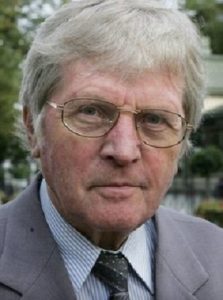
Tatu Vanhanen
Whatever the cause of corporate radicalism, the intensity of repression has picked up. Footballer Israel Folau’s attempt to raise legal funds to assert his right to religious free speech was censored by the crowd funding company GoFundMe for ideological reasons. In recent years Paypal has withdrawn financial services from anti-immigration and white identity websites. Mastercard is considering the same action. European banks have refused to operate the accounts of white identitarians, such as Austrian Martin Sellner. In February 2019 Chase Manhattan Bank closed the account of the leader of Proud Boys, a multi-racial civic nationalist fraternal organisation. Wikipedia, which has become an instrument of the liberal left, described the Proud Boys leader of committing “white supremacism” for praising Western civilisation. Facebook has moved closer to a totalitarian stance by prohibiting users from “praising or supporting” banned individuals.39
The left-authoritarian values of Big Tech were exemplified in 2015 when, at a UN event, Facebook’s Mark Zuckerberg was overheard agreeing with German chancellor Angela Merkel that Facebook users who disagreed with her open-borders immigration policy should be suppressed on his social media website.39 The following year in Berlin, Zuckerberg praised Merkel’s policy and announced that Facebook would censor speech critical of the immigrant influx.41
Since then the phenomenon has metasticized. Now Big Tech is in the process of imposing a privatised form of Beijing’s “social credit” system, whereby people’s incorrect behaviour is monitored and punished. Not only are (mainly) white populists being deplatformed for being “dangerous”, but Facebook users are only permitted to refer to banned individuals for the purpose of condemning them. Neutral and supportive mentions are banned, even in private chat groups. A report in The Atlantic stated:

Martin Sellner
Facebook and Instagram will remove any content containing Infowars videos, radio segments, or articles (unless the post is explicitly condemning the content), and Facebook will also remove any groups set up to share Infowars content and events promoting any of the banned extremist figures.42
The Atlantic writer hoped the Orwellian measures would be extended further on Instagram to prevent “extremist thought”. Another article in the magazine criticised white baseball players for visiting President Trump when players of colour had refused.43 What is criticised as totalitarianism in the case of Communist China is being promoted by Western cultural elites.
Censorship by social media corporations is a return to the post-WWII establishment liberal consensus that suppressed expressions of white identity. The original consensus involved a monopoly of elite universities, the mainstream press, network television and the popular music industry. This monopoly partially collapsed for about two decades due to the emergence of the internet, but has been largely re-established.
This is the ruthless juggernaut that Kaufmann hopes to deflect with appeals to self-interest. He might appear timid to conservatives but in the present university environment his stance is courageous.
XI
Conclusion
Whiteshift might be part of a trend. The assumption that it is okay to express ethnic pride, that it is not immoral or racist to defend one’s national identity or to preserve society’s ethnic balance, is being extended to whites after many decades in the sin bin. The idea is beginning to appear in other academic works, for example Roger Eatwell and Matthew Goodwin’s National Populism: The Revolt against Liberal Democracy, which won the Sunday Times’ book of the year for 2018. Like Kaufmann, Eatwell and Goodwin address a progressive audience when they urge respectful engagement with national populists.
But the multicultural spoils system is so entrenched that the cultural establishment is unlikely to gracefully recant its double ethnic standard. If Eric Kaufmann’s vision of tolerance is to be realised, if it is to become as acceptable to advocate the interests of whites as it is other ethnicities, whites will need to fight for their rights.

— Dr. FRANK K. SALTER received his PhD in Australia (Griffith University) but spent most of his career at the Max Planck Institute for Behavioural Physiology in Germany. Frank has taught in Britain, the US, Central and Eastern Europe. His books include Emotions in Command: Biology, Bureaucracy, and Cultural Evolution (Transaction, 2008) dealing with organisational behaviour and On Genetic Interests: Family, Ethnicity and Humanity in an Age of Mass Migration (Transaction, 2006) an evolutionary theory of ethnic solidarity and conflict. He has recently also published two volumes of his collected essays which were published in Quadrant magazine: The War on Human Nature in Australia’s Political Culture (Social Technologies, 2017) and The Aboriginal Question – Australian Racial Politics of Indigenous Recognition and Anglo De-recognition (Social Technologies, 2018). Now returned to his native Australia, Frank consults on policy and management issues.
Endnotes:
- Eric Kaufmann, Whiteshift: Populism, Immigration, and the Future of White Majorities (Penguin, 2018) p. 489.
- Eric Kaufmann interviewed by Peter Whittle, “White Shift: Identity, immigration & the West I So What You’re Saying Is I So What You’re Saying Is” New Culture Forum (video) (4 February 2019) <youtube.com> (accessed 20 May 2019).
- Walker Connor, “A nation is a nation, is a state, is an ethnic group, is a …” Ethnic and Racial Studies Vol. 1 No. 4 (1978) pp. 378-400; Walker Connor, Ethnonationalism: The Quest for Understanding. (Princeton, NJ; Princeton University Press, 1994).
- Peter Coleman, “Australian Notes” Spectator Australia (5 May 2012) p. vi.
- Kaufmann, Whiteshift, op. cit., p. 10.
- Walker Connor, “Beyond reason: The nature of the ethnonational bond.” Ethnic and Racial Studies Vol. 16 No. 3 (1993) pp. 373-389.
- Frank K. Salter, “Strategic Considerations for Anglo-Australian Identitarians: Part I” SydneyTrads (24 December 2017) <sydneytrads.com> (accessed 30 November 2019); Frank K. Salter, “Strategic Considerations for Anglo-Australian Identitarians: Part II” SydneyTrads (24 December 2017) <sydneytrads.com> (accessed 30 November 2019).
- (Viscount) James Bryce, The American Commonwealth (London and New York, Macmillan, 1888) pp. 33, 563.
- Kaufmann, Whiteshift, op. cit., p. 20.
- Ibid.
- Ibid., p. 442; Frank K. Salter, “Misunderstandings of Kin Selection and the Delay in Quantifying Ethnic Kinship” Mankind Quarterly Vol. 48 No. 3 (2008) pp. 311-344.
- Frank K. Salter, “The biosocial study of ethnicity” in Rosemary L. Hopcroft, The Oxford Handbook of Evolution, Biology, and Society (New York; Oxford University Press, 2018) pp. 543-568.
- Ibid.
- Kaufmann, op. cit. p. 25.
- Kevin B. MacDonald, “Effortful Control, Explicit Processing and the Regulation of Human Evolved Predispositions” Psychological Review Vol. 115 No. 4 (2008) pp. 1012-1031.
- Bill Bishop, The Big Sort: Why the Clustering of Like-minded America is Tearing us Apart. (Boston; Mariner Books, 2009).
- Doug Jones, “Physical Attractiveness, Race, and Somatic Prejudice in Bahia, Brazil” in Lee Cronk, Napoleon Chagnon and William Irons (eds), Adaptation and Human Behavior: An Anthropological Perspective (New York, Aldine de Gruyter, 2000) 129-148; Joāo H. Costa Vargas, “Hyperconsciousness of Race and its Negation: The Dialectic of White Supremacy in Brazil” Identities: Global Studies in Culture and Power Vol. 11 No. 4 (2004) pp. 443-470.
- Rod Liddle interviewed by Peter Whittle, “Rod Liddle: Brexit, BBC bias & the liberal elite I So What You’re Saying Is” New Culture Forum (video) (17 March 2019) <youtube.com> (accessed 30 November 2019).
- Kaufmann, Whiteshift, op. cit., Chapter 12.
- Kaufmann, Whiteshift, op. cit., p. 230.
- Heiner Rindermann, David Becker and Thomas R. Coyle, “Survey of Expert Opinion on Intelligence: Causes of International Differences in Cognitive Ability Tests” Frontiers in Psychology Vol. 7 No. 399 (2016).
- Kevin B. MacDonald, The Culture of Critique: An Evolutionary Analysis of Jewish Involvement in Twentieth-century Intellectual and Political Movements (Westport, Connecticut; Praeger, 1998).
- Kaufmann, Whiteshift, op. cit., p. 488; Kevin B. MacDonald, (1998). “Jewish Involvement in Shaping American Immigration Policy, 1881-1965: A Historical Review” Population and Environment Vol. 19 No. 4 (1998) pp. 295-356.
- Eric. P. Kaufmann, “Verdict: Suicide – Eric Kaufmann Replies to Kevin MacDonald” vDare (online) (12 August 2009) <vdare.com> (accessed 11 May 2011).
- Kaufmann, Whiteshift, op. cit., pp. 71-73.
- Guillaume Faye and Michael O’Meara, Why We Fight (Arktos, 2011).
- Tatu Vanhanen, Ethnic Conflicts: Their Biological Roots in Ethnic Nepotism (London; Ulster Institute for Social Research, 2012).
- Kaufmann, Whiteshift, op. cit., p. 454.
- Fact Sheet: “Obesity and Overweight” World Health Organisation (16 February 2018) <who.int> (accessed 11 June 2019)
- Tatu Vanhanen, The Limits of Democratization: Climate, Intelligence, and Resource Distribution (Augusta, Georgia: Washington Summit Publishers, 2009); Frank K. Salter (ed), Welfare, Ethnicity, and Altruism: New Findings and Evolutionary Theory (London: Frank Cass, 2004); Richard Lynn, and Tatu Vanhanen, IQ and the Wealth of Nations (Westport, Connecticut: Praeger, 2002).
- Richard D. Alba, “The Twilight of Ethnicity Among Americans of European Ancestry: The Case of Italians” in Richard D. Alba (ed) Ethnicity and Race in the U.S.A. Toward the Twenty-first Century. (London: Routledge & Kegan Paul, 1985) pp. 134-158, 152-153.
- Eric Kaufmann interviewed by Peter Whittle, op. cit.
- Eric Kaufman (@epkaufman) Twitter Status (28 June 2019) <twitter.com> (accessed 2 July 2019); Noah Carl (@NoahCarl90) Twitter Status (26 June 2019) <twitter.com> (accessed 2 July 2019); Noah Carl explains his case at his blog Support Noah Carl <supportnoahcarl.com> (accessed 2 July 2019); See also “The Times View on the Sacking of Noah Carl: Monoversities” The Times (10 may 2019 @ 12:01AM GMT) <thetimes.co.uk> (accessed 2 July 2019).
- Kaufmann, Whiteshift, op. cit., p. 93.
- Ibid., Chapter 1.
- Ibid., Chapter 9.
- Eric Kaufmann, The Rise and Fall of Anglo America (Harvard University Press, 2004) p. 311.
- Quentin Skinner, Liberty Before Liberalism (Cambridge: Cambridge University Press, 1998).
- Georgia Wells, “Facebook Ban for ‘Dangerous’ Individuals” The Australian (online) (3 May 2019 @ 12:21PM AEST) <theaustralian.com.au> (accessed 30 November 2019).
- Video Report: “Merkel Confronts Zuckerberg on Hate-Post Policy” Bloomberg (online) (28 September 2015 @ 5:20) <bloomberg.com> (accessed 30 November 2019).
- Associated Press, “Zuckerberg on Refugee Crisis: ‘Hate speech has no place on Facebook’” The Guardian (online) (27 February 2016 @ 6:00 AEST) <theguardian.com> (accessed 24 June 2019).
- Taylor Lorenz, “Instagram and Facebook Ban Far-Right Extremists” The Atlantic (online) (2 May 2019) <theatlantic.com> (accessed 30 November 2019).
- Jemele Hill, “Why Don’t White Athletes Understand What’s Wrong with Trump?” The Atlantic (7 May 2019) <theatlantic.com> (accessed 30 November 2019).

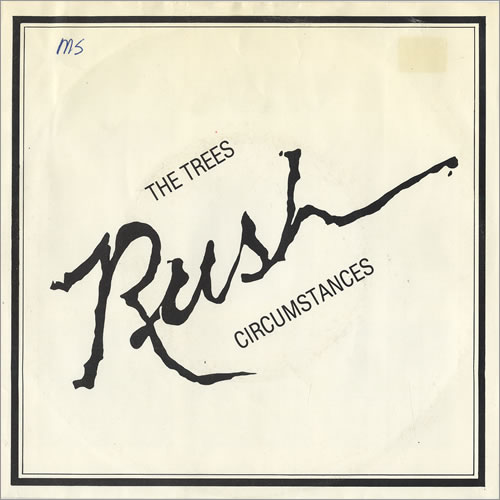



Ultimately, Kaufmann is advocating for a sneakier form of globalization, where whites will have a voice but will capitulate to the idea that their race will eventually be bred out of existence via race blending. He at least supports a voice for whites. Maybe he will read this review and do some serious thinking. Whites will need to get sneaky as well to out-smart this Slow-genocidal game these people are playing. Almost every movie that is being made these days, includes “multiculturalism” and other inventions by the liberal left. Not only movies but every medium of communication has been inundated with this liberal extremism.